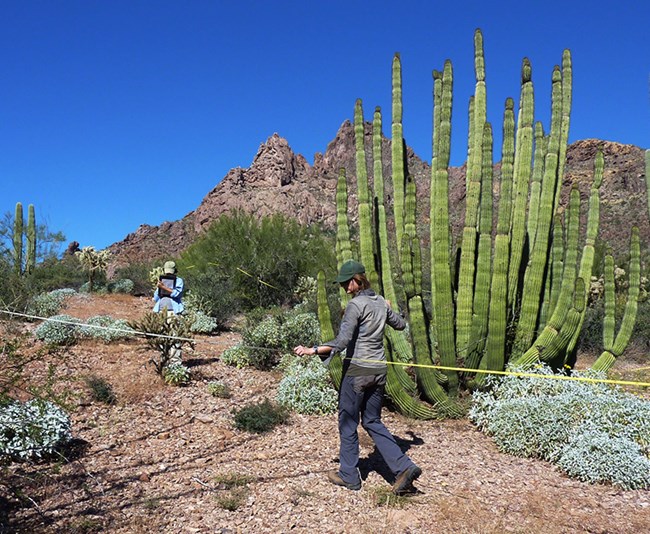
To make sound decisions, park managers need accurate information about the resources in their care. They also need to know how park ecosystems change over time, and what amount of change is normal. In 1976, Organ Pipe Cactus National Monument was designated as an International Biosphere Reserve. Eight years later, its Ecological Monitoring Program (EMP) was initiated. Since 1984, NPS staff have monitored 10 parameters related to the monument’s physical environment and animal populations. Prior to the start of the NPS Inventory and Monitoring (I&M) program, the EMP was one of the longest-running, most extensive ecological research programs in the National Park Service. Today, the Sonoran Desert Network (SODN, part of the NPS I&M division) collects long-term data on Organ Pipe’s “vital signs.” Like a physician monitoring a patient's heartbeat and blood pressure, SODN scientists monitor key resources, like climate, water, and vegetation. Then they analyze the results and report them to park managers. Knowing how key resources are changing can provide managers with early warning of potential problems. It can also help them to make better decisions and plan more effectively. Conservation and scientific research, including studies of human impact on the desert, are invaluable in protecting park resources. Scientific research is also conducted by park staff, other state and federal scientists, university professors and students, and independent researchers. Because many parks prohibit activities that occur elsewhere, scientists can use the parks as areas for determining the effects of these activities where they do occur. Especially in the American West, national park lands often serve as the best model for what a relatively undisturbed landscape looks like. You can learn about recent research or generate a park species list below. Source: NPS DataStore Saved Search 4911 (results presented are a subset). To search for additional information, visit the NPS DataStore. Park Species ListsSelect a Park:Select a Species Category (optional):
Search results will be displayed here.
|
Last updated: July 18, 2022
